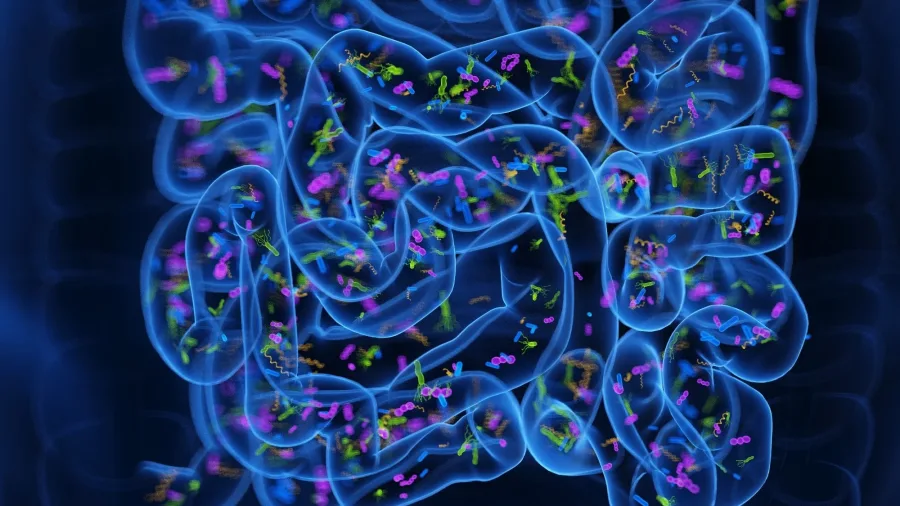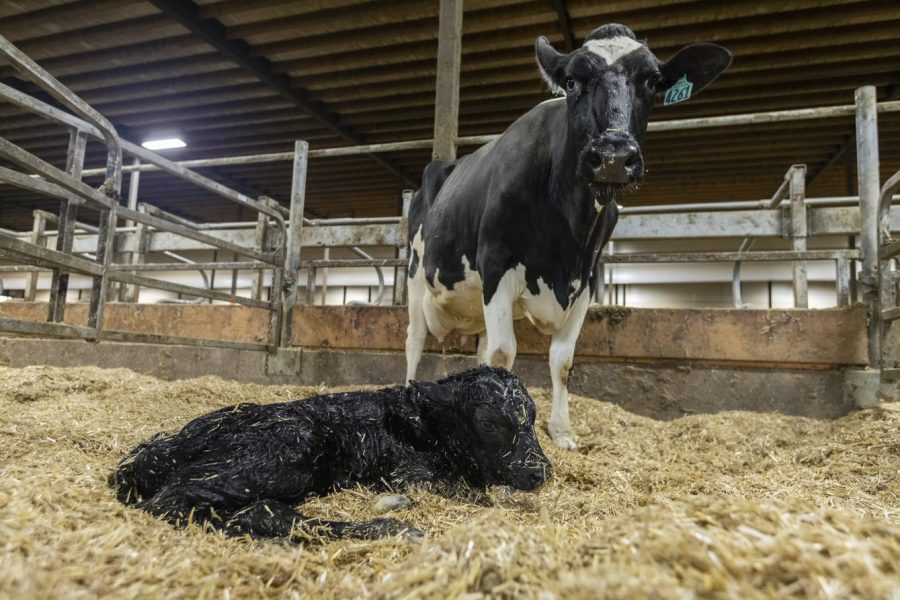Unlock expert strategies for sustainable dairy farming success. Are you adhering to the ten commandments of dairy farming to enhance productivity and ensure long-term sustainability?
Summary: Dairy farming, a cornerstone of the agricultural industry, requires a delicate balance of science, skill, and dedication. To excel, one must prioritize animal welfare and balanced nutrition, embrace modern technology, and ensure financial viability, serving as a roadmap to sustainability and productivity. Comprehensive animal welfare methods such as housing, a balanced diet, and frequent veterinary treatment minimize death rates and illness. Research shows a 5-7% increase in milk supply with optimal feeding regimens. Automated milking systems and data analytics can reduce labor requirements and increase output. Waste management can reduce greenhouse gas emissions, improve water quality, and produce valuable byproducts like compost and biogas. Dairy farmers can enhance practices by following these principles, ensuring long-term success in an evolving industry. By adhering to these commandments, farmers can not only improve their operations but also contribute positively to the broader agricultural community.
- Strategic planning and continuous improvement are essential for successful dairy farming.
- Balanced nutrition and health monitoring of livestock can significantly increase milk production.
- Technology such as automated milking systems and data analytics can enhance labor efficiency and productivity.
- Effective waste management can mitigate environmental impact and generate valuable byproducts.
- Financial planning and strategic investments are crucial for long-term viability.
- Building strong community relationships contributes to the broader agricultural sector and community well-being.
- Continuous education and staying informed about industry developments ensure that farmers can adapt to evolving industry standards.

Sustainable dairy production is no longer just a slogan environmentalists use; it has become a pillar of current agricultural methods. Understanding and applying sustainable ways is valuable and necessary for the seasoned dairy farmer who has seen the industry’s evolution. Sustainable approaches not only save long-term expenses, improve animal welfare, and protect the environment but also make the farm profitable and adaptable to future problems. By incorporating modern practices such as greenhouse gas emission reduction, the use of renewable energy sources, water conservation techniques, improved animal welfare practices, and soil health maintenance, you are not only meeting regulatory requirements or riding the wave of sustainability; you are also ensuring the long-term financial success of your business. The path to a sustainable dairy farm is fraught with problems. Still, it also presents several potentials for development and improvement.
Commandment 1: Prioritize Animal Welfare
According to the American Dairy Association, upholding high animal welfare standards is an ethical commitment and a sensible financial decision. Providing a stress-free environment for cows greatly enhances milk output and farm health. Cows that are well cared for may produce up to 10-15% more milk than those that are stressed or poorly managed (American Dairy Association).
Comprehensive animal welfare methods, such as providing enough housing, a balanced diet, and frequent veterinary treatment, help minimize death rates and illness, increasing herd lifespan and productivity. According to research by the University of Wisconsin-Madison, farms that emphasize animal welfare have a 20% decrease in veterinary expenditures and a significant boost in milk quality and consistency (University of Wisconsin-Madison).
A holistic approach to animal care, including physical well-being and mental stimulation, leads to more sustainable and lucrative agricultural operations. Healthy, pleased cows indicate ethical farming is essential to operational efficiency and economic success.
Commandment 2: Prioritize Balanced Nutrition and Efficient Feeding
Your dairy herd’s health and production rely heavily on your dietary plans. Balanced nutrition and effective feeding procedures guarantee that cows obtain nutrients properly, directly impacting milk production and general health. According to research published in the Journal of Dairy Science, cows on optimal feeding regimens had a 5-7% increase in milk supply compared to those on regular diets. Furthermore, these cows demonstrated better physical condition and a lower prevalence of metabolic diseases, highlighting the importance of well-planned dietary regimens (Journal of Dairy Science).
Total Mixed Ration (TMR) techniques, which include forages, grains, proteins, vitamins, and minerals in a single feed mix, may improve feed efficiency and regulate nutritional intake. A steady and balanced diet promotes milk production and enhances the herd’s immune system, fertility, and lifespan. A well-known dairy farm consultant once said, “Effective feeding strategies are the backbone of profitable dairy farming.” Without them, you risk jeopardizing your herd’s health and bottom line.
Adopting precision feeding technology and regularly engaging with a nutritionist will help modify feeding protocols and ensure the diet matches your herd’s demands at different production phases. For example, adding feed additives like probiotics and enzymes may improve nutritional absorption and digestion, resulting in improved health outcomes and more excellent milk production. Proactive feeding practices improve milk output, cow health, and farm profitability, making it essential for successful dairy farming.
Commandment 3: Embrace Technology
The integration of technology into dairy farming has revolutionized the sector, empowering farmers to manage their operations with unprecedented accuracy and efficiency. Automated milking systems, for instance, have significantly reduced labor requirements while increasing milk output and quality by ensuring cows are milked regularly and stress-free. These systems use advanced sensors to monitor cow health and milk output, providing farmers with valuable data to enhance herd management strategies. According to research by the University of Minnesota, farms that implemented automated milking systems saw an average increase in milk output of 5-10% (“Automated Milking Systems: Benefits and Pitfalls,” University of Minnesota Extension).
Data analytics is another critical tool for revolutionizing dairy production. Farmers may make more productive and sustainable choices by gathering and evaluating data on cow health, milk output, feed efficiency, and other factors. For example, Greenhouse Dairy in Ireland has successfully implemented sophisticated herd management software that monitors cow health, breeding cycles, and nutritional requirements. This integration has simplified their operations and cut feed costs by 15% (“Dairy Farm Uses Technology to Boost Efficiency,” Irish Farmers Journal).
Investing in technology is not a fad but a must in contemporary dairy production. Farmers who embrace automated technology and data analytics may improve operational efficiency, cut expenses, and ultimately assure the sustainability and prosperity of their dairy farms.
Commandment 4: Focus on Reproductive Health
Ensuring the reproductive health of your herd is not just a guideline; it’s a necessity for successful dairy production. Efficient reproductive control is crucial for herd sustainability and long-term production. According to the National Dairy FARM Program, regular veterinarian check-ups and innovative breeding practices are key to maintaining reproductive efficiency and overall herd health. The numbers speak for themselves. Research published in the Journal of Dairy Science found that routine veterinarian inspections were associated with a 20% increase in conception rates among dairy cattle (source).
Furthermore, new breeding procedures, including artificial insemination, have transformed reproductive management by improving genetic quality and herd production. In techniques supported by the National Dairy FARM Program, genomic selection has reduced generational gaps while enhancing attributes such as milk output and disease resistance. Regular reproductive health screenings and sophisticated breeding technology are crucial measures. They protect your herd’s current production and its long-term resilience and efficiency. Incorporating these sophisticated procedures and health check routines yields significant advantages, including reduced culling rates, more excellent conception rates, and increased milk output and quality. It’s a strategic investment in your dairy farm’s future, building a solid and prolific herd capable of fulfilling current dairy farming needs.
Commandment 5: Manage Waste Effectively
Effective waste management is a critical component of sustainable dairy production. Responsible handling of manure and other waste products preserves the environment while increasing the profitability of your dairy enterprise. According to the Environmental Protection Agency (EPA), good waste management may decrease greenhouse gas emissions, improve water quality, and provide valuable byproducts such as compost and biogas.
A thorough manure management strategy is vital. This entails collecting, storing, and applying manure as fertilizer to promote crop nutrient absorption while limiting runoff into aquatic bodies. According to research published in the Journal of Environmental Management, farms that use integrated waste management systems have lower nitrogen runoff and better soil health.
Recycling waste materials, such as employing anaerobic digesters to convert manure into biogas, may reduce methane emissions and provide extra cash. According to USDA Economic Research Service research, farmers using biogas recovery systems may save significant energy while increasing farm earnings. According to the EPA, “sustainable management of agricultural waste is crucial for both environmental protection and the economic health of the farming sector.”
Commandment 6: Optimize Water Usage
Water is essential in dairy production since water is used to hydrate cows, clean up after themselves, and rinse. The typical dairy cow consumes 30-50 gallons of water daily, translating to significant water demand on a farm [University of Wisconsin-Extension]. Efficient water usage conserves this valuable resource while lowering operating expenses. One viable technique is to construct water recycling systems, which may collect water from milking parlor washdowns and other procedures, lowering total usage by up to 30%, according to the University of Wisconsin Extension.
Another tip is regularly repairing water pipelines and troughs to minimize leaks and overflows, ensuring every drop counts. Water-efficient nozzles and automatic watering systems may also help with conservation efforts. The Dairy Sustainability Framework reports that farms using these approaches may reduce water use by up to 20%. Investing in technology such as soil moisture sensors for irrigation control allows for more accurate watering schedules based on real-time soil moisture data, minimizing over-irrigation and conserving water resources.
Efficient water management benefits the environment and improves economic performance and sustainability, aligning with the larger aims of contemporary dairy production. Adopting these techniques allows dairy farmers to guarantee that they are using water resources properly, which is crucial for the long-term survival of their businesses.
Commandment 7: Maintain Soil Health
Healthy soil is the foundation of successful dairy production, influencing crop productivity and cattle health. Ensuring soil health requires a comprehensive strategy that includes crop rotation, cover cropping, and frequent soil testing. According to the USDA Natural Resources Conservation Service, good soil resource management may boost production and improve environmental health (USDA NRCS).
Crop rotation is essential because it disrupts the cycle of pests and diseases, minimizing the need for chemical treatments. Rotating crops, particularly legumes, may restore soil minerals and organic matter. According to research conducted by the Rodale Institute, crop rotation may decrease soil erosion by up to 32% while increasing nitrogen levels in the soil by up to 23% (Rodale Institute). Cover cropping with clover, rye, and vetch improves soil structure, reduces erosion, and increases water penetration.
Regular soil testing offers detailed information on nutrient levels, pH balance, and organic matter content, enabling informed decision-making. The Soil Health Institute emphasizes that soil testing may detect shortages and excesses, directing adequate fertilization and amendment techniques (Soil Health Institute). Maintaining soil health with these strategies guarantees that your farm is productive and sustainable for many years.
Commandment 8: Ensure Financial Planning and Management
Your dairy farm’s financial stability is the foundation of your whole business. Effective financial planning and management are more than simply maintaining records; they are about making strategic choices that might be the difference between survival and success. Begin with a precise budget, including your anticipated income and costs. This covers everything from feed and veterinarian bills to labor and maintenance fees. A planned budget, according to Farm Credit East, aids in the identification of extra expenses and cost-cutting opportunities. Cost-cutting initiatives should be done methodically. One effective method is constantly analyzing and comparing costs to your budget. This allows you to identify any discrepancies early and take appropriate action.
Investing in agricultural upgrades is another aspect of sound financial management. Whether updating your milking equipment to increase productivity or investing in technology promoting herd health, these expenditures should be considered long-term investments rather than immediate charges. According to a USDA analysis, farms that actively engage in technical and infrastructure upgrades have better long-term profitability. Furthermore, organizations such as Farm Credit East provide various financial products and services specialized to the requirements of dairy farmers, making it more straightforward to fund necessary renovations.
Consider hiring a financial counselor who specializes in agriculture. They may give significant insights about new financial products, prospective tax breaks, and investment possibilities you may need to learn. Having this degree of understanding may provide a strategic advantage for making informed choices and ensuring the long-term survival of your dairy farm.
Commandment 9: Foster Community Relationships
Building strong ties with the local community and industry stakeholders is critical for the long-term success of any dairy farming company. Fostering such ties may provide various benefits, including access to shared resources, collaborative problem-solving, and improved local support during difficult times. Engaging with the local community can also help your farm’s reputation, boost customer trust, and increase product demand. The Dairy Farmers of America (DFA) emphasizes the value of community partnerships, claiming that “building community relations enhances the public perception and builds goodwill, which can be invaluable during public relations challenges.”
Many successful farmers have benefited from good community relationships. Through community involvement, we’ve formed crucial connections and a network of support that has helped us through many struggles and successes along the way. Collaboration with industry stakeholders may give vital assistance and innovative ideas that individual farmers may not have otherwise. Leveraging these partnerships may lead to joint learning opportunities, bulk buying benefits, and collaborative marketing activities. As a result, devoting time and attention to developing and sustaining these connections is advantageous and necessary for long-term growth.
Commandment 10: Stay Informed and Educated
Finally, it is impossible to exaggerate the importance of being informed and educated in an ever-changing sector like dairy farming. Continuing education keeps you competitive, efficient, and up-to-date with industry innovations and regulatory changes. Resources such as agricultural extension agencies provide essential assistance. For example, the Penn State Extension offers seminars for dairy producers that concentrate on best practices, technical breakthroughs, and financial management.
Professional development programs and networks like the USDA’s Dairy Programs provide education and community assistance. Engaging with these tools improves your practices and benefits the larger agriculture community by sharing ideas and improvements.
Quotes from industry professionals highlight the significance of this commandment, such as Dr. Jeffrey Bewley, previously of the University of Kentucky, who noted, “Continuing education is not just a benefit; it is a necessity for the modern dairy farmer” (University of Kentucky Knowledge Repository). Finally, investing time in knowledge and education lays the groundwork for long-term and successful farming, securing your legacy in the ever-changing dairy sector.
The Bottom Line
The concepts presented here provide a thorough foundation for establishing long-term success in dairy production. Prioritizing animal welfare, balanced nutrition, and reproductive health solidifies the basis for herd production. Integrating technology and intelligent waste management simplifies operations while ensuring environmental sustainability. Optimizing water consumption, preserving soil health, financial planning, and cultivating strong community partnerships contribute to a secure corporate environment. Finally, being educated and constantly educating oneself promotes continuous development and adaptability, improving operational efficiency and contributing to the agricultural community’s success.














